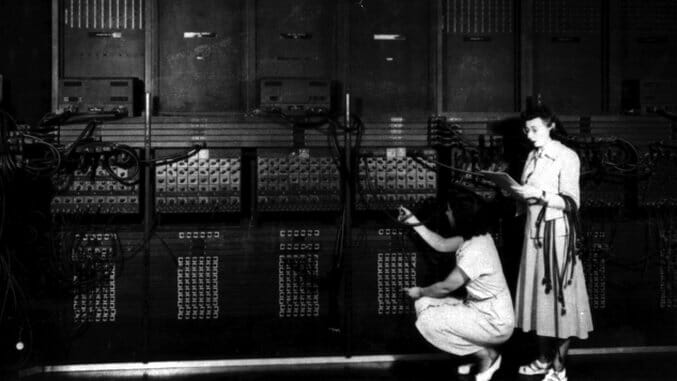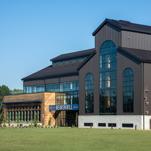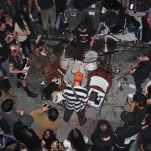Meet the Computers: The Women Programmers Behind the World’s First General Purpose Computer
Photos Provided by the U.S. Army
In the 1940s, the U.S. Army funded the development of the world’s first all-electronic general purpose computer known as the Electronic Numerical Integrator And Computer, or simply ENIAC, which was built at the University of Pennsylvania’s Moore School during the frenzy of World War II.
The military wanted a system to calculate ballistic trajectories, which had been carried out by hand up until that point. There were around 70 women, then dubbed “Computers”, working on these calculations when a job posting came available for six positions on a secret project.
Just what exactly this project was, no one really knew. The positions were ultimately filled by six Computers. They were: Frances Bilas Spence, Jean Jennings Bartik, Marlyn Wescoff Meltzer, Kathleen McNulty Mauchly Auntonelli, Frances Elizabeth (Betty) Holberton, Ruth Lichterman Teitelbaum.
-

-

-

-

-

-

-

-

-

-

-

-

-

-

-

-

-

-

-

-

-

-

-

-

-

-

-

-

-

-

-

-

-

-

-

-

-

-

-

-

 The ENIAC was built in secret in the early 1940s and was a vast and bulky machine. It weighed 30 tons, measured 8 feet high and 3 feet wide, came with 3,000 switches, and inside it contained 18,000 vacuum tubes and 80 air blowers for cooling the system. But there was another staggering hurdle that faced the ENIAC team: programming. No programming languages existed and, due to the classified nature of the ENIAC, the Computers didn’t get security clearances until the very last minute and had no programming manuals to draw from.
The ENIAC was built in secret in the early 1940s and was a vast and bulky machine. It weighed 30 tons, measured 8 feet high and 3 feet wide, came with 3,000 switches, and inside it contained 18,000 vacuum tubes and 80 air blowers for cooling the system. But there was another staggering hurdle that faced the ENIAC team: programming. No programming languages existed and, due to the classified nature of the ENIAC, the Computers didn’t get security clearances until the very last minute and had no programming manuals to draw from. The ENIAC was not completed until 1945 when the war was over but it was still to be put to use by the military. Its public unveiling came in 1946 and it was championed by industry and the media alike as a “Giant Brain” but in all the excitement of this new technological wonder, the programmers seemingly slipped into the background.
The ENIAC was not completed until 1945 when the war was over but it was still to be put to use by the military. Its public unveiling came in 1946 and it was championed by industry and the media alike as a “Giant Brain” but in all the excitement of this new technological wonder, the programmers seemingly slipped into the background. During her research in the ‘80s, Kleiman recalls finding a photo of the ENIAC that was surrounded by women but none of them were captioned beneath. Sparking her interest, she began calling around the UPenn to find out who they were. This eventually led to many years working on the documentary.
During her research in the ‘80s, Kleiman recalls finding a photo of the ENIAC that was surrounded by women but none of them were captioned beneath. Sparking her interest, she began calling around the UPenn to find out who they were. This eventually led to many years working on the documentary. “Years later when I talked with computer historians, they would dismiss the work of the women of ENIAC as minor by saying: ‘Oh, they were sub-professional’,” Kleiman says. “But looking at it from the women’s perspective, the Computers knew that the work they were doing was critical to the war effort. The ENIAC Programmers knew the work they were doing was cutting-edge in the brand new field of modern computing.”
“Years later when I talked with computer historians, they would dismiss the work of the women of ENIAC as minor by saying: ‘Oh, they were sub-professional’,” Kleiman says. “But looking at it from the women’s perspective, the Computers knew that the work they were doing was critical to the war effort. The ENIAC Programmers knew the work they were doing was cutting-edge in the brand new field of modern computing.” While the recognition was certainly a step in the right direction, the pressing need still exists to spread the word on the ENIAC programmers’ legacy, which will show the focal role that women played in the earliest days of modern technology history, and to ensure that it is a legacy and impact that will continue.
While the recognition was certainly a step in the right direction, the pressing need still exists to spread the word on the ENIAC programmers’ legacy, which will show the focal role that women played in the earliest days of modern technology history, and to ensure that it is a legacy and impact that will continue. The ENIAC programmers’ work cannot be understated but neither can it ever be taken for granted once they’ve finally been given their due, a goal that Kleiman says has yet to be reached.
The ENIAC programmers’ work cannot be understated but neither can it ever be taken for granted once they’ve finally been given their due, a goal that Kleiman says has yet to be reached.






































